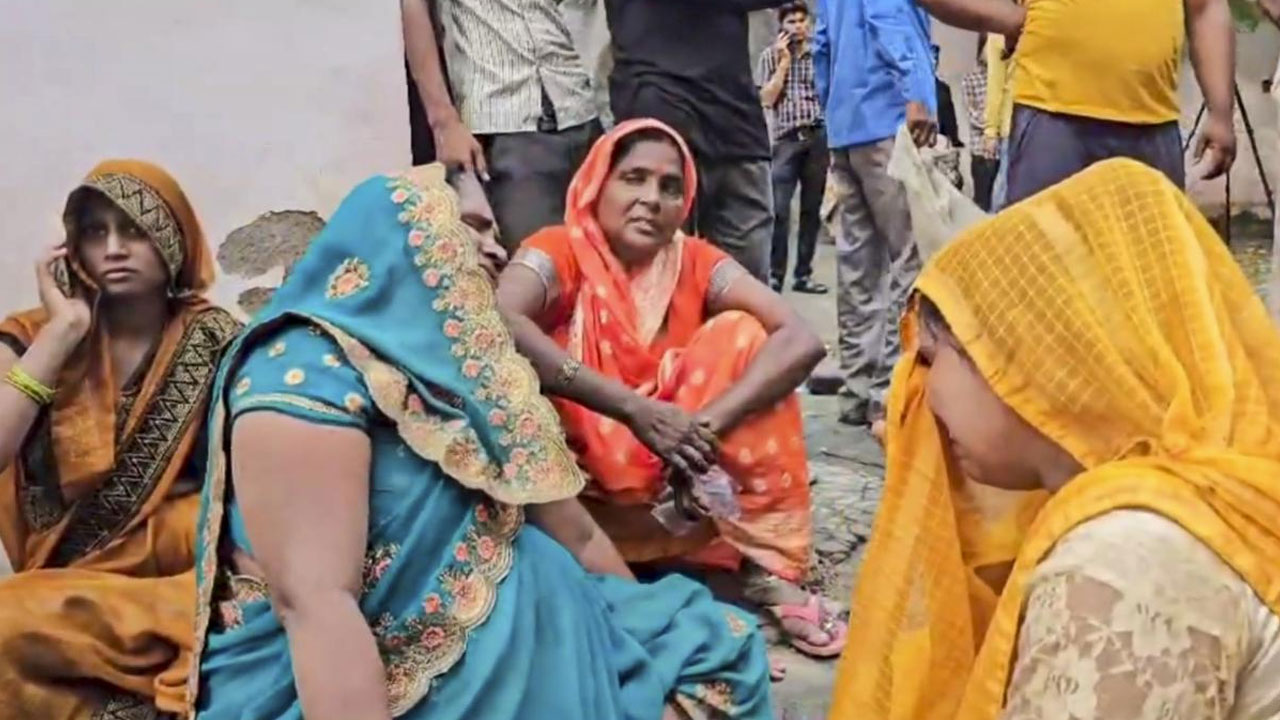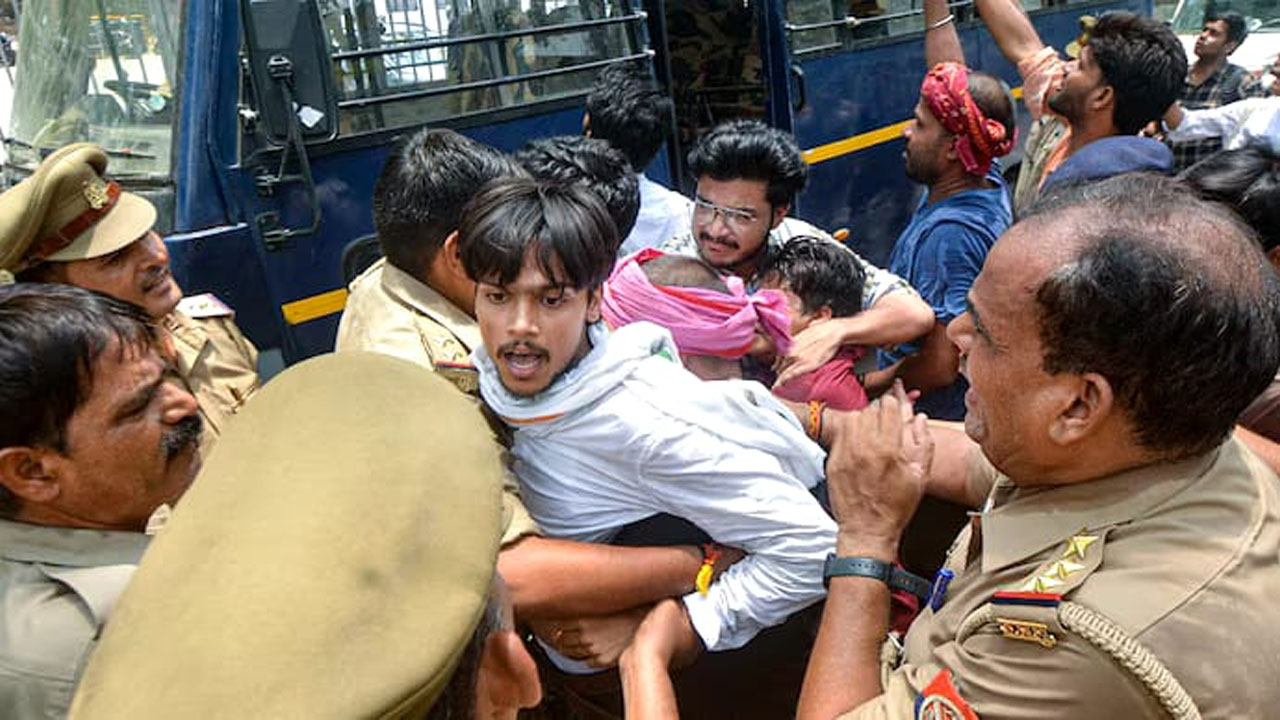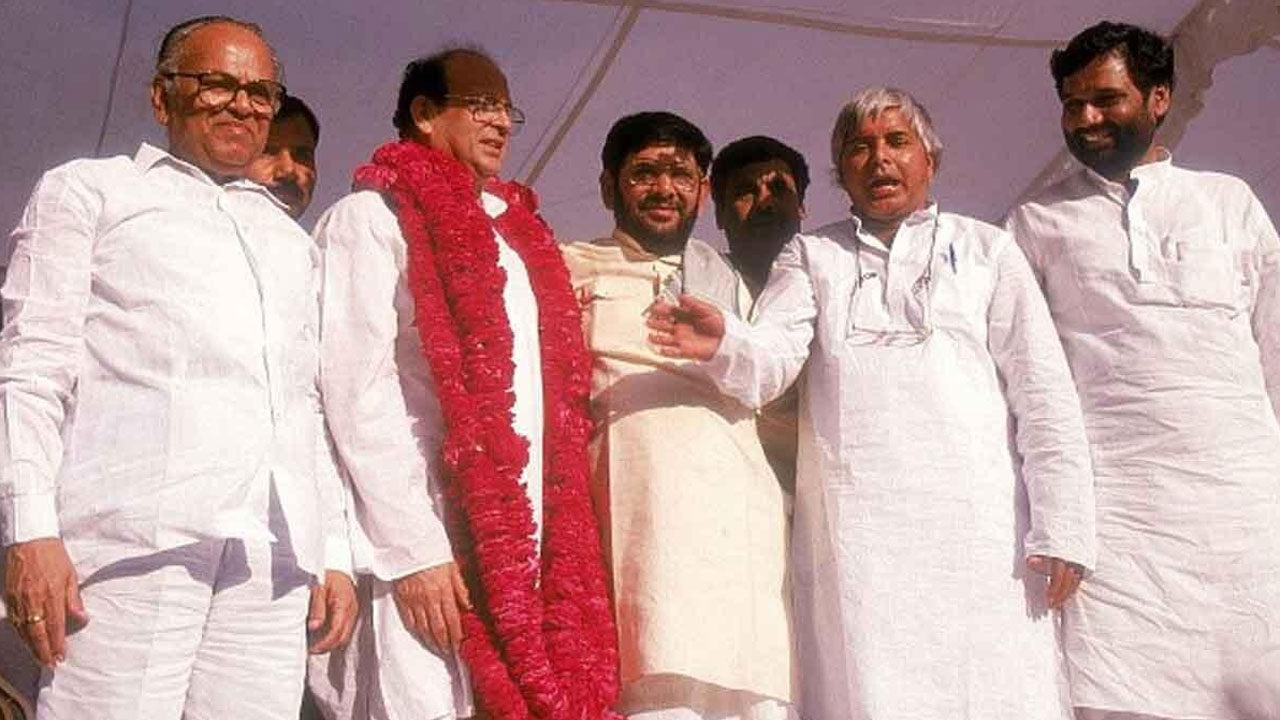This is a lightly edited transcript of the speech delivered by Prof G. Mohan Gopal at the first session of a seminar on ‘Judicial Appointments and Reforms’ organized by the Campaign for Judicial Accountability and Reforms (CJAR) on 18 February 2023. The topic for the session was ‘Executive Interference in Judicial Appointments’. Prof G. Mohan Gopal is a former vice-chancellor of the National Law School, Bengaluru and a former director of the National Judicial Academy of the Supreme Court of India.
The word interference means having a role that you are not supposed to have, a role that is not wanted. That is the literal meaning of the word interference. When we say there is interference we think that the government is having a role in judicial appointments that is not supposed to have, that is not welcome. And it is also true, I think as Mr [Aditya] Sondhi [Senior Advocate, Karnataka High Court] said, that this happens in many ways. It’s not through a formal communication between the Collegium and the government but through many subtle and not so subtle, explicit and implicit ways. We need to look at interference, as Mr Sondhi invited us to do, in a much broader context of de facto interference, and the role of the bar and the politicization of the bar which Mr Sondhi talked about is an extremely important issue, which deeply affects the question of interference in judicial appointments. That is accepted. The question before us is what kind of reforms to the existing system can help deal with this interference, counter this interference? And in particular the reform of the Collegium system, either its abolition and replacement by a commission or retaining and reforming it – what would be the best way to resist interference? I don’t think there is doubt in anyone’s mind that no one, including Chief Justice Lalit, will brook any interference in judicial appointments by the government. When I say interference I mean what it is not supposed to do and which is not sought. When we look at the problem as responding to interference in judicial appointments and we look at the role of the Collegium or an alternate system, unless as Justice Lalit told us, there is no better alternate system and therefore we have to go with the Collegium. We have another session to look at alternative systems and I am not going to transgress into that area. I am just going to look at interference in the system by the government, which is really the issue before us.
So, that there is interference, is accepted. What we need to discuss is what were the causes and consequences of the interference? Why is there interference? In the very limited time available here, I will mention a couple of points.
First, a set of facts. I looked at some numbers, and numbers are always interesting. There have been 111 judges – according to the website of the Supreme Court – appointed to the Supreme Court during the United Progressive Alliance (UPA) and National Democratic Alliance (NDA) period, that is from May 2004 till today. Of the 111 judges, 56 were appointed during the UPA period of 10 years and 55 during the NDA period of 8 years and nine months as of now. We have almost similar numbers of judges appointed by the UPA and NDA. If you look at this and say what is the impact of any kind of interference, some interesting facts begin to emerge. Now, here we come into interpretation which could be quite subjective. But what we want to look for is, are there judges being appointed who are politically biased? Either in the 10 years of the UPA or the 8 years and nine months of the NDA? And let’s not look at their internal outlook and their life, which is very complex. Let’s look at their judgements, the objective material.
Now when I looked at these from my own perspective, and I am not going to say names because there is no time to discuss all that, I found that during the UPA period there were six judges who we could broadly put as constitutionalist judges – who believe in the supremacy of the Constitution. I wouldn’t say liberal or progressive. I would say constitutionalist judges who firmly, deeply believe that all decisions have to be made exclusively on the touchstone of the Constitution and nothing else. I could find only six names that I could put my hand on my heart and say that if I had a case and the judge had to decide it, I would have absolutely no doubt in my mind that this judge would decide it, maybe in my favour or against me, but only on his or her best understanding of the Constitution and not influenced by any other source of law other than the Constitution. This number actually goes up to nine under the NDA regime. Why? Not because the NDA government sponsored such people who would swear by the Constitution. To the contrary, it is because there was resistance to what the government is doing from the Collegium. The Collegium, during this period, particularly before 2019, like they had made efforts in the case of Mr Sondhi, in the case of several others, in the case of Justice [Akil] Qureshi, who so far has not been mentioned but he is a great martyr of the system. He should rightfully have been in the Supreme Court. Justice A.P. Shah is here. He should rightfully have been in the Supreme Court. They are all martyrs of the system. Leaving all that aside, the Collegium resisted, when they saw that the pressure on the other side was increasing. Some members of the Collegium, not the Collegium as a body, which is a transitory group, saw to it that some constitutionalist judges would be promoted. And the number didn’t go up significantly but it did go up. This is only six and nine out of 55 or 56.
But if you look at another figure – how many judges are committed to go outside the Constitution and look at Sanatana Dharma or Vedas or ancient Indian legal principles as the basis of their decision? They may be religious people, believe in the Vedas, they may worship but when they sit as judges – the first group are only looking only at the Constitution applying their separate principles of interpretation – how many would look beyond, genuinely – not because they are influenced by the government or seeking appointment after retirement but genuinely based on their own bona fide belief that the real source of justice is the vedas and religious texts, and not the Constitution? I couldn’t find any such judge among those appointed by the UPA, from their written work, except maybe one or more borderline cases that suggested they were in their judgments looking beyond the Constitution as the source of law. But that number is nine after the NDA has come to power, that I could find, five of whom are still on the bench – and I won’t name anyone obviously – who explicitly in their judgment indicate that they have to go beyond the Constitution and that is what happened for example in the Ayodhya judgment. Some of the judges went beyond the Constitution to decide the case. So this number of judges who are traditionalist or theocratic, who will find the source of law in religion and not in the Constitution, has sharply increased.

I believe this is the first phase of a two-part strategy to achieve the stated goal of establishing Hindu Rashtra by 2047, when we will celebrate the centenary of the republic, not by overthrowing the Constitution but through interpretation by the Supreme Court of the Constitution as a Hindu document. The first phase involves appointing judges who are open to looking to theological sources as a source of law. The second phase, which will now begin, is to appoint judges who will identify the source. And that began, for example, in the Hijab judgment where one of the two judges actually said that “panth nirpeksh” [Hindi translation of “secular” in the Preamble to the Constitution] refers to religion and not Dharma, and that the Constitution does not say “dharma nirpeksh”, it says panth nirapeksh; he said that Dharma applies to the Constitution; Constitution law is Dharma. What he means by Dharma is Sanatana Dharma. He was saying that our Constitutional Law is Sanatana Dharma. This is the first time that the rubicon has been crossed. He was not saying this rhetorically. He was saying we have to take into account Dharma in applying the law. Someone sent me a video saying we are having homa in schools of Karnataka but not hijab. Homa is allowed but hijab is not. The reason is that hijab is considered [part of] religion and Homa is [part of] Dharma, for the benefit of all of the earth and mankind, so that’s OK. Now which religion does not consider itself as dharma?
So now we are opening the doors to go beyond [the Constitution] to simply sources in general to becoming more specific. We recently had a high court judge specifically refer to Vedic sources and say that is the source of particular provisions in the law. This is the next step. Once that is completed in the next 24 years I think we would be able to safely say that India is a Hindu theocracy under the same Constitution as interpreted by the Supreme Court. So the idea is to hijack the judiciary and establish a Hindu theocracy. And I, personally, as a student of law, do not want a law minister sitting at the Collegium making sure that this agenda is fulfilled.
In the Collegium today, the first number I gave, that of judges who are constitutionalists, has gone up. We have at least a few people here who have been members of the Collegium. The Collegium cannot speak about it but they are not blind to the risks and dangers that the country faces, and they are trying to build in some resistance now because they see the danger.
The second point is that the core problem is that our Constitutional project and vision is in conflict with the vision and values of the oligarchy that runs this country. This country is run by an oligarchy because most of the power is in the hands of just four communities in all fields. They had British and Muslim forces to counter them but after independence there is no community in the country that can counter them in terms of power and influence and so there is no countervailing force except the Constitution. In many countries, including in Pakistan, the Constitution reflects the interests of the oligarchy. There is no conflict between the oligarchy and the Constitution. But here the Constitution, by deliberately introducing democracy, equality, liberty, dignity, socialism, secularism, is directly challenging the world view of the ruling Hindu oligarchy. That conflict first drew a reaction in phase 1 of the India’s judicial independence, where the judiciary stalled the Constitution programme, like striking down one progressive legislation after another that reflected the Constitutional vision in Article 38 (1), of creating a new social order, not an economic or political order, in which justice, social, economic and political, shall inform all institutions of national life. That stalling drew a reaction from Justice Krishna Iyer, Mohan Kumaramangalam. We can read Kumaramangalam out of context but what he was saying is, “Stop stalling the programme and vision of the Constitution.” And Krishna Iyer, and the gang of four as they were loving called, Justice P.N. Bhagwati, Justice O. Chinappa Reddy, Justice D.A. Desai – the four of them together – they tried to align the judiciary’s vision with the vision of the Constitution. Then came Mandal in 1991. And I believe it is not by accident that within one year, in 1992, the Collegium system was established. Because it was part of the reaction to Mandal – the judiciary had to be insulated from the resurgent OBCs coming into the executive and the legislature. A government and an executive that would be controlled by a different social group, not from the oligarchy, had to be resisted. So it is not by coincidence that the Collegium system emerged and that time there was no resistance to the Collegium system from the political side – they worked together to ensure that judicial appointments were still controlled by the elite. Today, if you look at the social composition of the Supreme Court we see that it is protected, without any diversity, from a social point of view. From a gender point of view it is better. I saw a very widely circulated social feed with the picture of five respected and wonderful jurists, five women judges in the Supreme Court, but the comment being circulated widely among common people was, “They see five women, all I see is five Brahmins.” So there is a genuine concern about the lack of diversity and that is leading to a lack of representation. So the project of protecting the judiciary has succeeded. That is what is creating the vulnerability.
Now the government is taking this one step further and saying, “Look, we are going to use the judiciary; like Mohan Kumaramangalam wanted to use the judiciary to align the judiciary with the Constitution, we want to use the judiciary to dissolve the Constitution and build a theocracy here.” This is a reflection of the Bar. The oligarchy controls not the judiciary but the bar. It is from there that the domination comes. If you go to any high court, you will find that two or three communities dominate the Bar and the Bench. So going forward my conclusion is it will be very dangerous to give this government, whose explicit mission is to overthrow the present republic and establish a Hindu Rashtra, any role in judicial appointment. We must protect the Collegium for now under the present circumstances. This is not the time to hand over any power or role in judicial appointments to a government that is bent on destroying the Constitutional mission. Not that the earlier governments were any different but this one has a clear ideological agenda. But in order to protect the Constitution, the Collegium must consciously see that its job is to protect the Constitutional vision against attacks. It must consciously choose and put on the Bench those who are committed to protecting the Constitution against this subversive attack that is taking place now, and the Collegium, to strengthen the judiciary, must diversify. Religion, caste, region, economic class – in all these respects, we want to have a rainbow judiciary where everyone feels this is our judiciary, we are represented on it.
I conclude by saying that in 1930 Ambedkar presented a memorandum at the First Round Table Conference where he put eight brilliant safeguards for the Depressed Classes. One of the safeguards was adequate representation in the legislature. That was safeguard No 4. Safeguard No 5 was adequate representation in the public services, including the executive and the judiciary. He did not use the word reservation. This is the root of reservation. He proposed that recruitment to the public services should be so regulated as to ensure due and adequate representation of all communities, because that is essential. Not just Scheduled Castes or Depressed Classes but all communities must have due and adequate representation. He told the Round Table Conference that we, the Depressed Classes, are here of course for a responsible government but also for a representative government. No one else demanded a representative government. The demand for a representative government has been forgotten and so we have an oligarchic government. So the Collegium must ensure that the Constitution is defended. The Collegium must ensure the move forward to diversify the judiciary and make it a representative judiciary, and that will provide the foundation for the judiciary to be a guardian not just to the Constitution but to the values of the Constitution. How many judges stand up and say we are guardians of the Constitution? Many. How many stand up and say we are guardians of democracy, socialism, secularism? Very few. So we have to safeguard the content of the Constitution, not merely its formal structure.
Forward Press also publishes books on Bahujan issues. Forward Press Books sheds light on the widespread problems as well as the finer aspects of Bahujan (Dalit, OBC, Adivasi, Nomadic, Pasmanda) society, culture, literature and politics. Contact us for a list of FP Books’ titles and to order. Mobile: +917827427311, Email: info@forwardmagazine.in)





